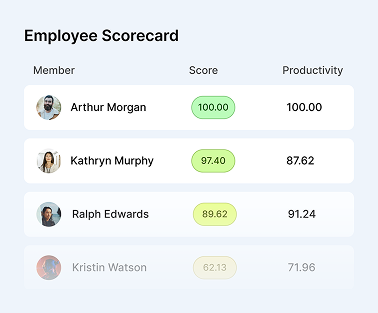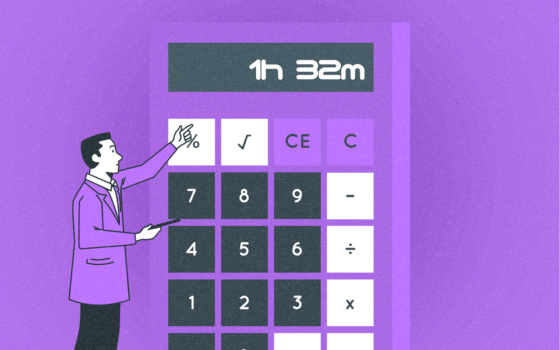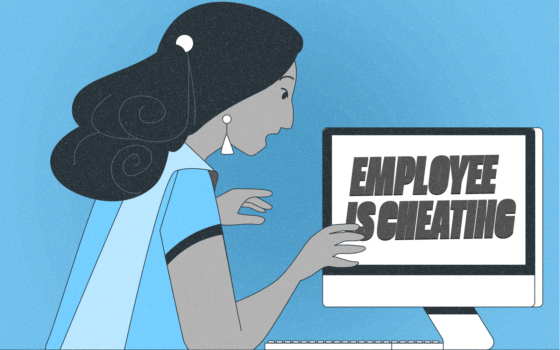Procrastination Demystified: A Real-World Guide That Works
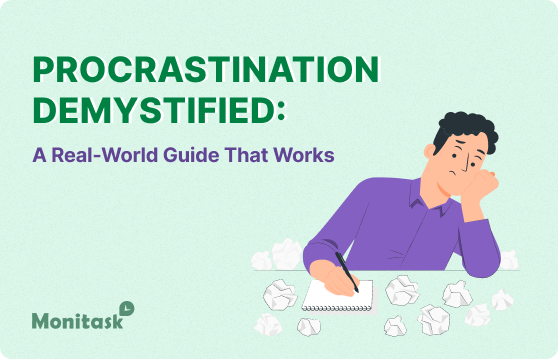
We’ve all been there—delaying tasks, promising ourselves we’ll start tomorrow, and then watching deadlines creep up faster than expected.
Procrastination often feels mysterious, but it’s usually driven by clear, solvable causes. Once you understand what’s behind it, you can take control of your time and focus.
This guide breaks down procrastination and gives you actionable strategies to overcome it.
What Is Procrastination and Why It Happens
Procrastination is the act of delaying or postponing tasks despite knowing it may lead to negative consequences.
It’s not just about poor time management—often, it’s linked to deeper psychological patterns like fear of failure, lack of motivation, or even decision
fatigue.
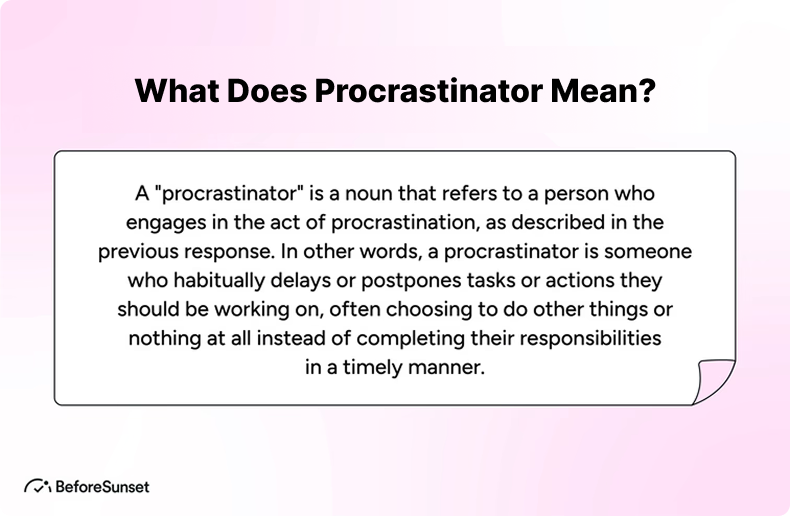
Common Psychological Triggers Behind Procrastination
Procrastination rarely comes from laziness—it’s usually a response to deeper mental roadblocks. Here are the most common culprits, and how to disarm them:
Perfectionism
Perfectionism whispers that your work must be flawless before you even begin.
This paralyzing standard leads to endless tweaking—or worse, never starting.
Ironically, the pressure often backfires, leaving you with rushed, subpar results as deadlines loom.
Repeat this mantra: “Progress over perfection.” Done is better than perfect, and most work can be refined later.
Fear of failure
Fear of failure turns your daily tasks into emotional minefields.
For those with anxiety or self-doubt, procrastination becomes a shield—if you don’t try, you can’t fail.
But stagnation hurts more than missteps.
Flip the script and see mistakes as tuition for growth. Action, however imperfect, builds confidence and skills over time.
Lack of clarity
Lack of clarity breeds hesitation.
Faced with vague instructions or sprawling projects, your brain defaults to avoidance.
Define one tiny starting point. Break “write a report” into “outline three bullet points.” Clarity fuels momentum.
Feeling overwhelmed
Feeling overwhelmed triggers shutdown mode.
When a task looms like a mountain, thinking “I’ll never finish” becomes a self-fulfilling prophecy. Scale the cliff one foothold at a time.
Divide the work into steps so small they feel harmless (“Open document → Write one paragraph”). Each micro-win rebuilds momentum.
Decision fatigue
Decision fatigue saps your willpower.
After a day of endless choices, even trivial tasks feel exhausting.
Procrastination becomes a way to dodge yet another decision.
Automate routines (e.g., morning work blocks) and limit options (wear a “uniform,” meal prep).
Low motivation
Low motivation strikes when tasks feel meaningless.
Without emotional engagement, even simple chores get postponed.
Spark motivation artificially:
1- Tie the task to a bigger goal (“This spreadsheet helps me save for a trip”)
2- Pair it with pleasure (a favorite playlist, a cozy café)
Maximize productivity of your business
Track employee productivity and simplify work with them
Actionable Strategies to Overcome Procrastination
1. Set Clear, Achievable Goals
Vague goals like “start working” or “study more” often lead to procrastination because they lack direction. Clear, specific goals give you a target and make it easier to take the first step.
Example of clear goals:
✅ “Write the introduction to my report by 3 PM.”
✅ “Review chapters 3 and 4 for 30 minutes.”
2. Break Tasks into Manageable Pieces
One of the biggest reasons people procrastinate is that a task seems too big or intimidating. When you break it down, you reduce overwhelm and make it easier to start.
How to break down a task:
✅ .Big task: “Finish project report”
✅ Broken down:
- Gather data
- Create an outline
- Write one section at a time
- Edit and format
Even 15 minutes of focused effort on one small part can build momentum.
3. Eliminate Distractions
Distractions like social media, phone notifications, or a cluttered workspace can destroy focus and encourage procrastination.
Tips to reduce distractions:
✅ Use website blockers (e.g., Cold Turkey, Freedom)
✅ Silence phone notifications or use Do Not Disturb mode
✅ Keep only what you need on your desk
✅ Try working in a library, quiet café, or study zone
Creating a distraction-free environment helps you get into a productive flow faster.
4. Use Time-Blocking Techniques
Time-blocking is a simple and effective method where you assign specific time slots to specific tasks. This helps you stay focused and avoid decision fatigue throughout the day.
Try these methods:
✅ Pomodoro Technique: 25 minutes of focused work + 5 minute break
✅ 90-minute focus sessions: Followed by a longer break
✅ Schedule your most challenging tasks when your energy is highest (e.g., mornings)
Consistency with time-blocking can dramatically reduce procrastination.
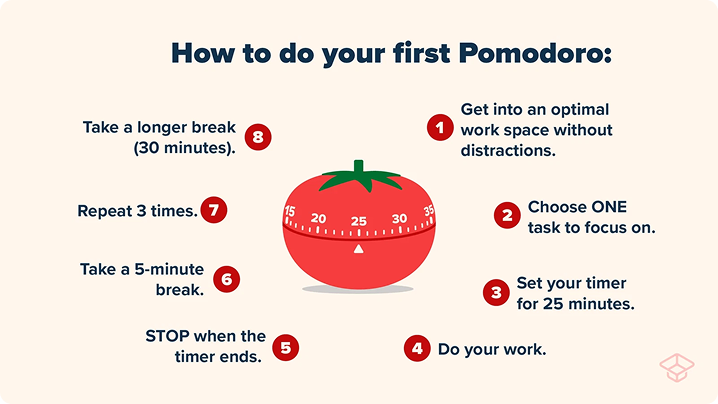
5. Find Internal or External Motivation
Sometimes we procrastinate because a task feels boring, meaningless, or unrewarding. Tapping into your “why” can help reframe your mindset and fuel action.
Ways to boost motivation:
✅ Remind yourself how this task supports your long-term goals
✅ Visualize the benefits of finishing the task
✅ Pair it with a reward (e.g., coffee break, Netflix episode)
External accountability, like study groups or telling a friend your deadline, can also increase commitment.
6. Practice Self-Compassion and Let Go of Perfectionism
Many procrastinators beat themselves up, which only worsens motivation. Instead, practicing kindness toward yourself can help you bounce back and get started again.
Instead of saying “I’m lazy,” try:
✅ “I had a rough day, but I’ll try again now.”
✅ “Done is better than perfect.”
Accept that not every task will be your best work—and that’s okay. Starting and finishing is what builds real progress.
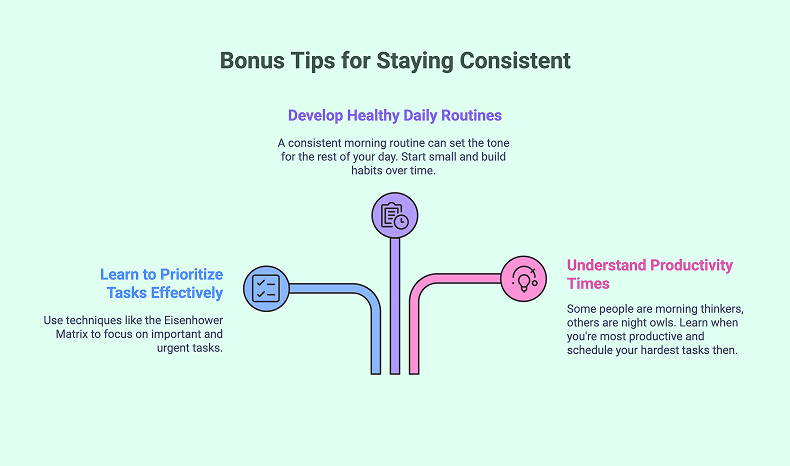
How Monitask Can Help You Overcome Procrastination
One of the most effective ways to beat procrastination is by increasing awareness of how you actually spend your time — and that’s exactly where Monitask comes in.
As a time tracking tool, Monitask helps you monitor your activity, stay accountable, and identify distractions. By tracking time spent on tasks, you can build better habits, set realistic goals, and see where your focus slips throughout the day.
Whether you’re working independently or with a remote team, Monitask helps build consistent, focused habits.
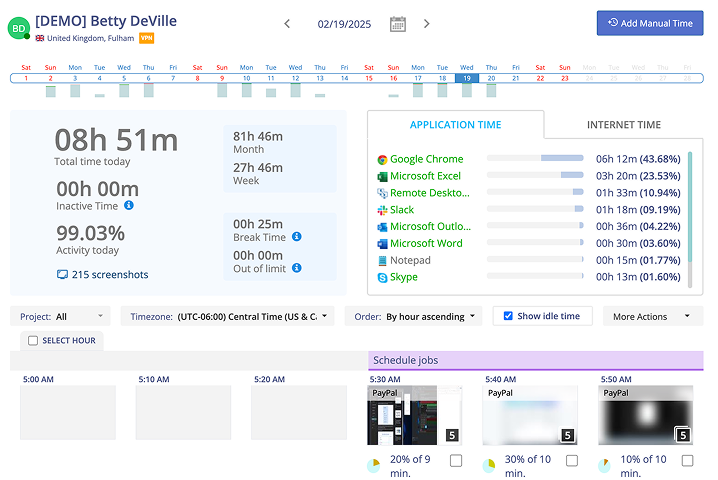
Conclusion: Focus on Progress, Not Perfection
Procrastination isn’t something you eliminate overnight — it’s something you learn to manage.
The key is to take small, consistent steps forward.
Don’t wait for the perfect moment or flawless plan. Start with what you can do today, and build momentum from there.
Progress beats perfection — every time.
– The Monitask Team
Frequently Asked Questions
How do I know if my procrastination is a serious issue?
If it interferes with work, school, or relationships, it may be time to seek help or explore the underlying causes.Chronic procrastination can be linked to anxiety, perfectionism, ADHD, or low self-esteem. If it’s affecting your daily life, it may help to speak with a professional.
Why do I procrastinate even when I want to get things done?
Procrastination often isn’t about laziness — it’s a coping mechanism. You may be avoiding stress, fear of failure, or simply feeling overwhelmed by the task.
What’s the fastest way to stop procrastinating?
The fastest way is to take one small, specific action. Don’t aim for perfection — just start. Setting a timer for 5 minutes can break the inertia.
How does time-blocking help?
Time-blocking creates structure and reduces decision fatigue. Knowing exactly when and what to work on keeps your brain focused and less likely to delay.
